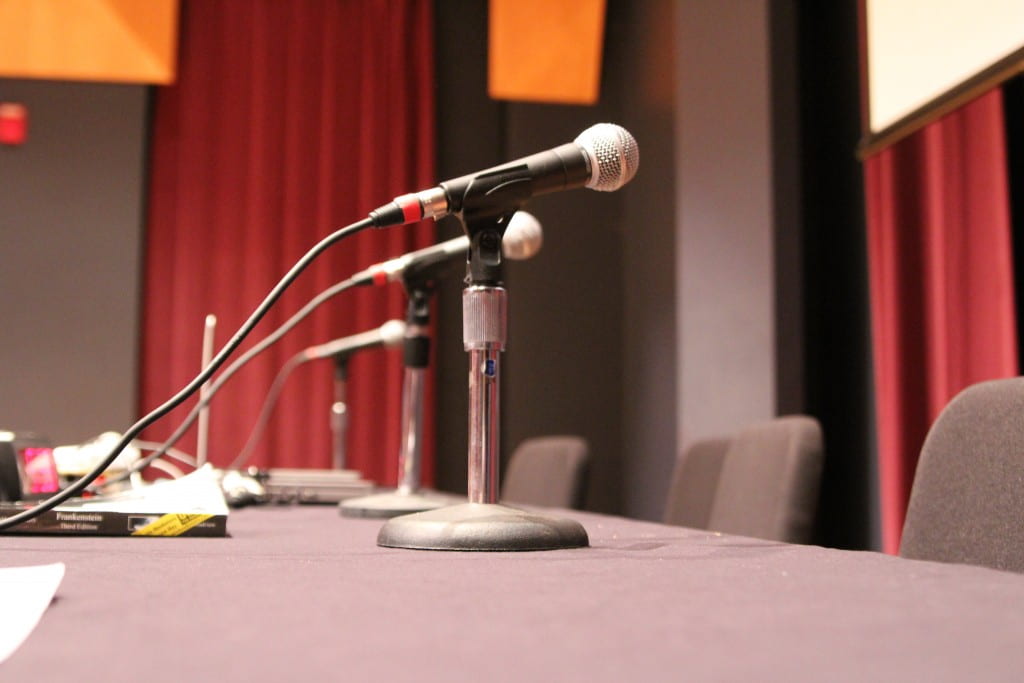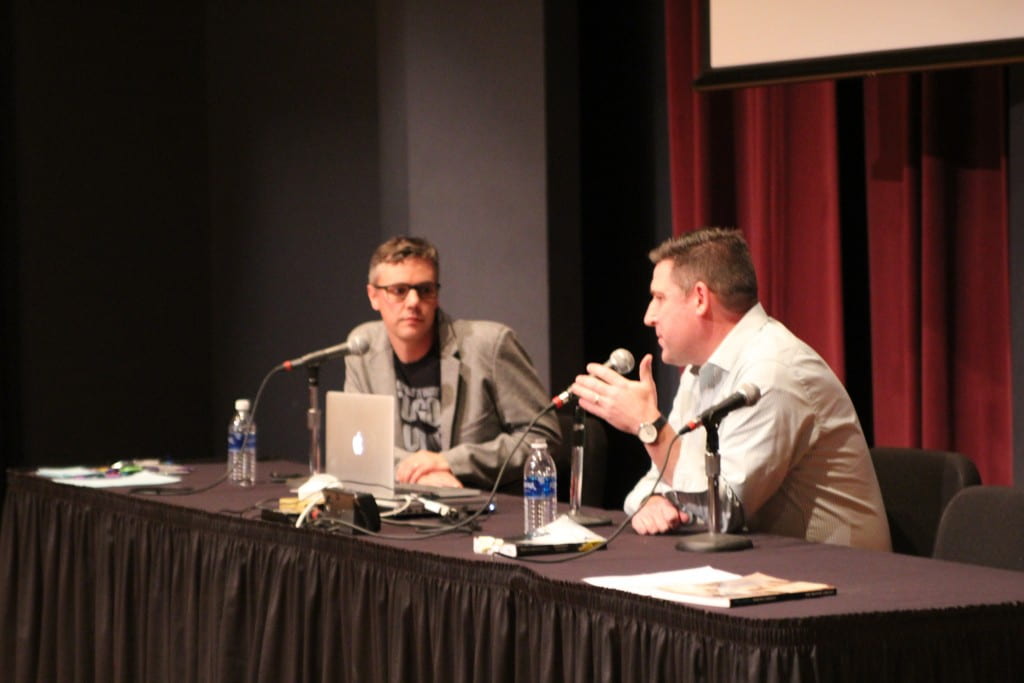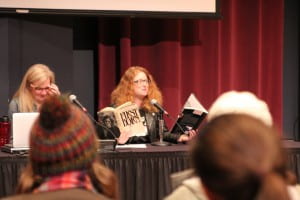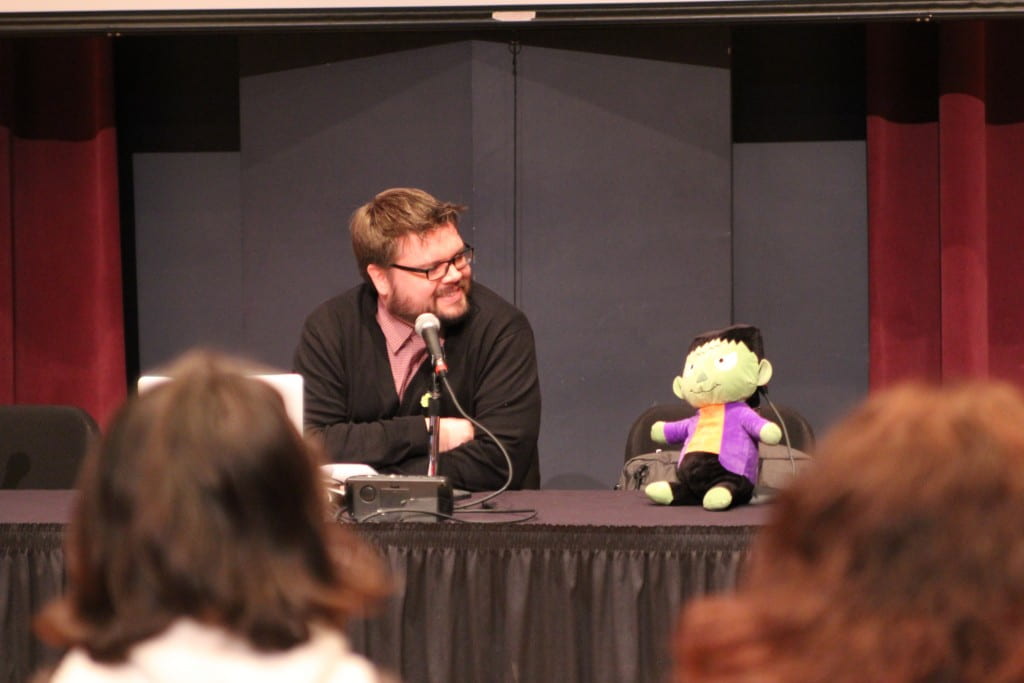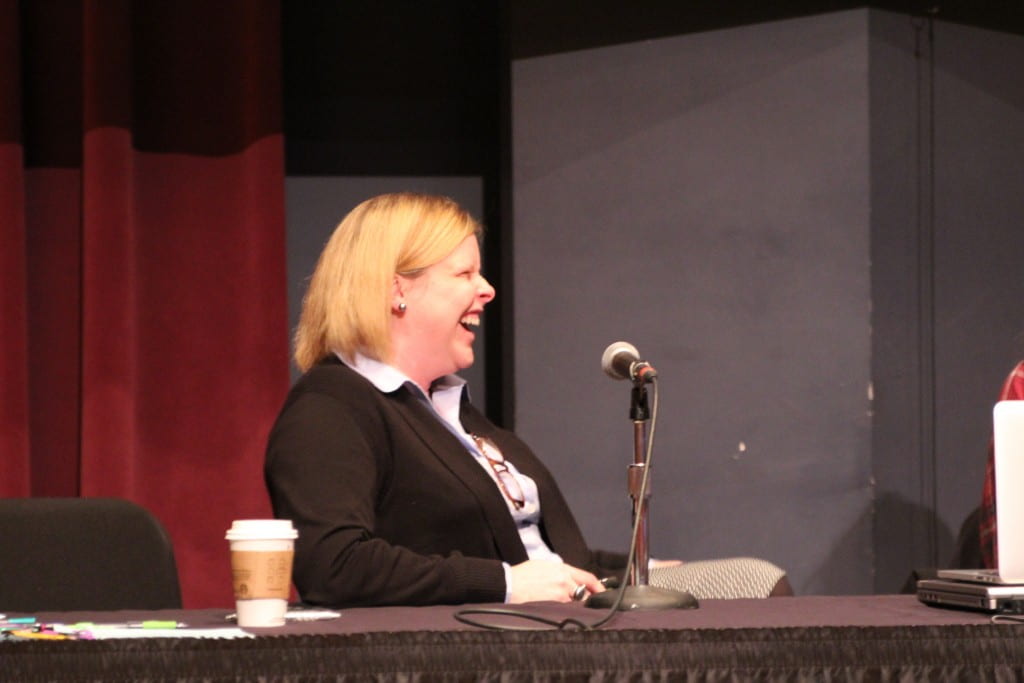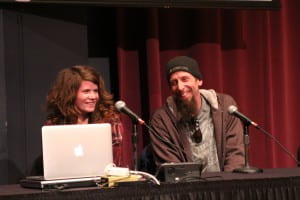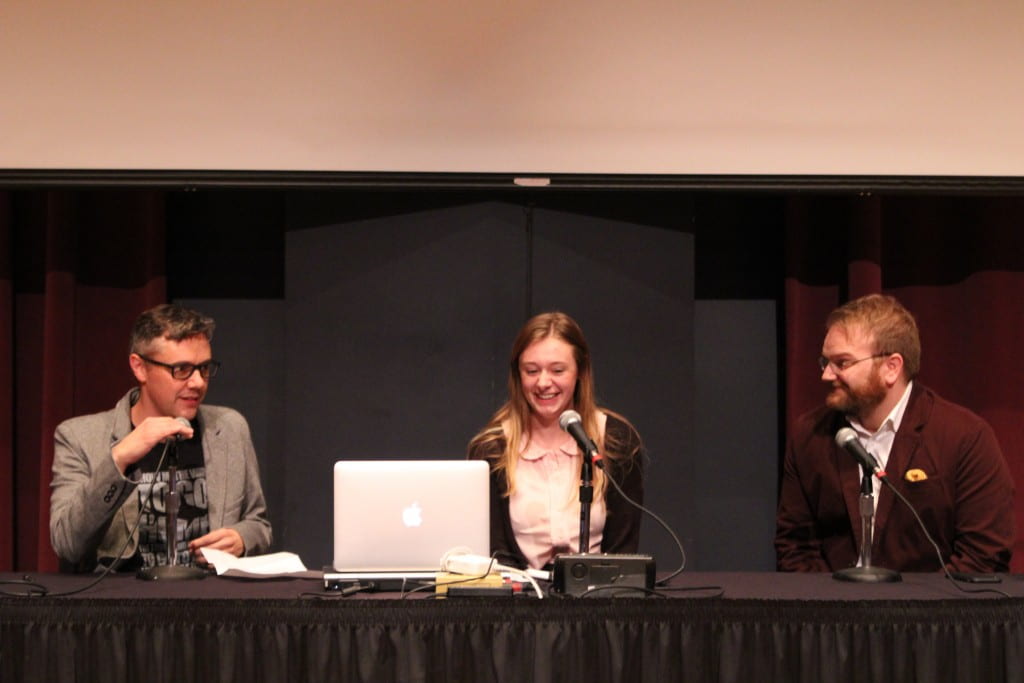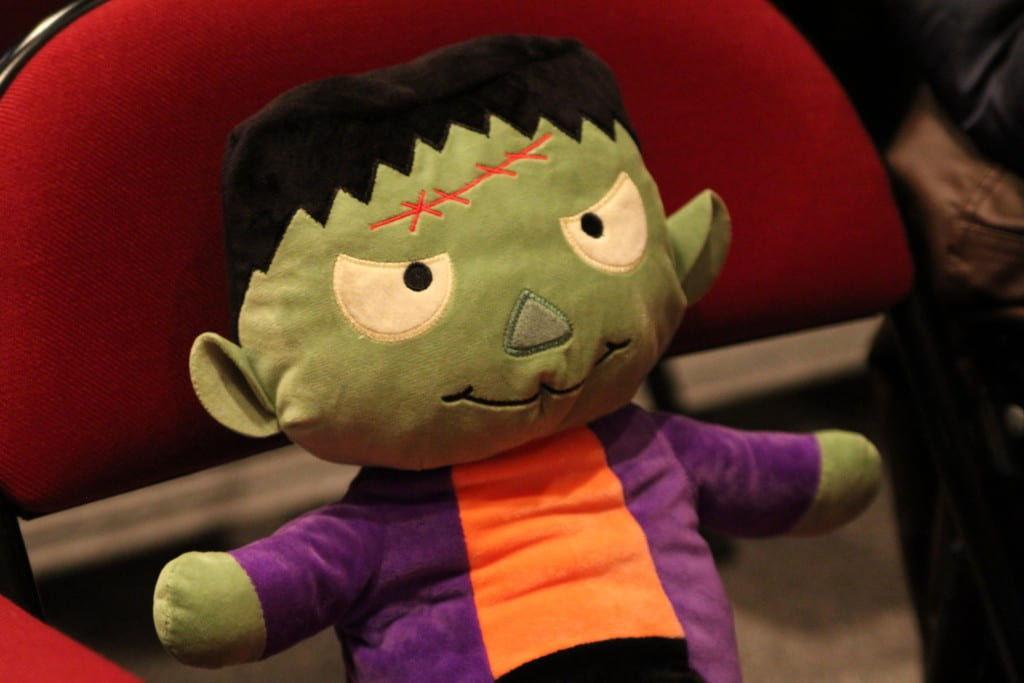Student Experience with Digital and Public Humanities: a relatively new emphasis offered at the University of Wisconsin-Green Bay.
For my last blog post as the Humanities Department Intern, I wanted to craft a post that delved into my Digital and Public Humanities (DPH) major. The purpose of this interview is to present information about the DPH emphasis. The questions asked in this interview are from the perspective of students who are interested in the major, want to learn more about what it is, and wish to know how it may be beneficial to them.
“Digital and Public…what?”
The Holiday Season is a wonderful time to spend with friends and family. Most of us, at this time in the semester, may be relieved and excited for the upcoming and well-deserved winter break. Many of us will retreat home to decompress from the long semester and enjoy our break traveling physically or through reading, working and spending time with loved ones. Of course, around this time of the year, the question arises, from the dear or rarely seen relative, “how is college and what are you studying?” I appreciate the look on my family and friends faces when I give them my detailed list of studies that I recite in one breath, “I am a double major in History and Digital and Public Humanities with a minor in Arts Management with an emphasis in Museums and Galleries.” Naturally, they respond with, “I got the first part of that but what is the second thing you said? Digital and Public…what? And what do you plan to do with those majors?”
The most effective way to illustrate my choice of majors is by giving examples of projects, research, and opportunities that I have encountered throughout my studies. This semester marked the beginning of my junior year here at UW-Green Bay, and I have a number of interesting and mind-expanding classes in history, the humanities, and the arts under my belt. This fall semester, I took my first Digital and Public Humanities course, “Hum Stud 200: Introduction to the Digital and Public Humanities,” otherwise known as the “Packers Class.” In this course, students were introduced to some of the basic skills foundational to the DPH major. A large part of the course was dedicated to learning HTML (Hypertext Markup Langauge), which is the first step in understanding the language necessary for creating web pages and applications.
The Packers class was a combined class between the Intro Digital and Public Humanities students and the Craft of History (HIST 290) students. Brent Hensel, the curator of the Packer Hall of Fame, co-taught this class with Professors Heidi Sherman and John Shelton. The overarching project of the semester was a collaboration project with both history and DPH students to create an interactive WordPress site that explored the history of the early years of the Packers. This year, the Packers are celebrating 100 seasons, dating back to 1919. We explored and researched the early history of the Packers organization, and the students created very impressive digital projects. There was a variety of different subjects, ranging from the evolution of the forward pass, civil rights in relation to the Packers organization, how the Great Depression affected the Packers, amongst others. At the end of the semester, our class had the exciting opportunity to present our projects and research at Lambeau Field. 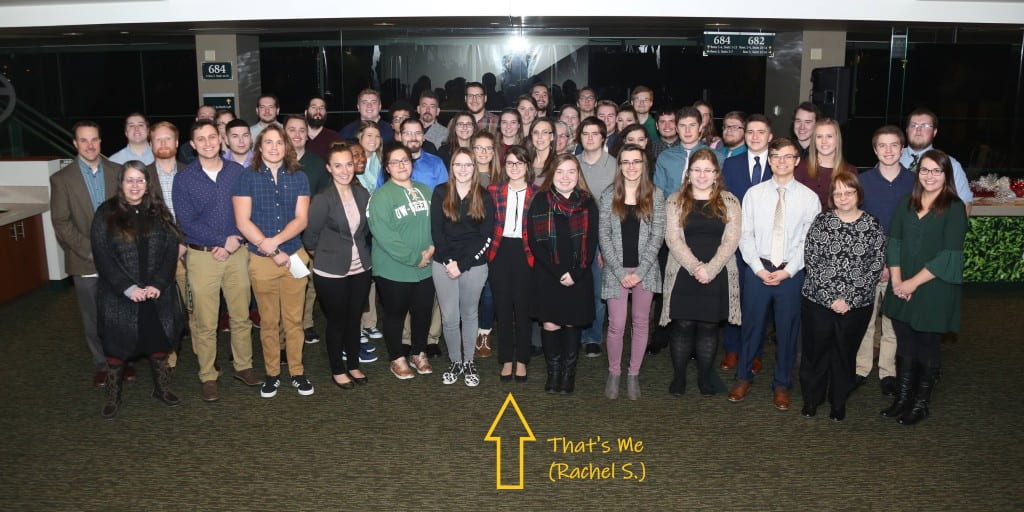
The Digital and Public Humanities students’ basic and fundamental knowledge of technology was put to practice in the creation of the WordPress sites. All of the skills we learned at the beginning of the semester were tested and practiced in the creation of my group’s website. The group that I was in completed our research project on Lyle Lahey’s Packer Cartoons. Our argument was that political and sports cartoons are portals to history. Lyle Lahey was a political and sports cartoon artist that published a variety of different cartoons from 1968 until his death in 2013. For our project, we analyzed and conceptualized a variety of different Lahey cartoons that focused on topics such as Coach Vince Lombardi and Dan Devine, as well as Labor Strikes in the NFL during the 1970s.
My favorite part of our project was creating the interactive pieces that were used on our website. For each Packer theme we discussed, I created a presentation using the software Canva that included the Lahey cartoons we were analyzing and researching. The purpose of these presentations was to show the viewer what key aspects of the cartoon that caught our attention and developed our research. Through our website, we presented Lahey’s cartoons in an interactive way enabling the viewer to take part in our analysis and history. With each page, the viewer is able to make their own conclusions about Lahey’s illustrations while being provided with the necessary historical context. I am immensely proud of what we all crafted, and I am glad that Lahey’s cartoons may be viewed with as much enthusiasm and appreciation as we had. Throughout this class, I not only learned digital basics, but I also gained digital competencies, which has enabled me to think critically about how to use digital platforms for communication, preservation, presentation, design, and analysis.
In conclusion, when my family and friends need clarification on what exactly is Digital and Public Humanities, I have issues giving them a concise definition. To me, the Digital and Public Humanities can embody many different definitions depending on who you ask. I would define Digital and Public Humanities as an interdisciplinary field that uses various forms of media to excite and engage the public audiences about culture, language, the world of history, and the humanities. Digital and Public Humanities students learn how to use different technological tools and methods in order to serve the public. It entails critical thinking, artistic design, and research while engaging with technology appropriately. This emerging field and new emphasis is interdisciplinary and integrates conversations on different platforms. The Digital and Public Humanities have the potential to tear down the long-established “ivory tower” of the Humanities and creates a public platform of relevance and accessibility for anyone.
What other students have to say about the major:
John Werner, a double major in History and Digital and Public Humanities: “Digital and Public Humanities, as a field, is both rapidly growing and highly flexible. It is a critical puzzle piece in moving the Humanities field as a whole into the 21st century as everything [becomes] more digitized, further promoting education by permitting interactivity in what students are learning.”
Brian Domina, a double major in History and Digital and Public Humanities: “Digital and Public Humanities helped me further develop myself as a person and clarify my points of view…enabling [me] to connect to points of view I did not know existed.”
Rachel Bowker (a major in Digital and Public Humanities): “Originally, I was just going to go to UW-Milwaukee to get my masters in Library Sciences because I already have a bachelors in Business Administration. However, I chose Digital and Public Humanities because it I felt like it would be a great stepping stone before going on to the master’s program. Within the first semester, I have learned how to do HTML coding, operate and design a website, and create a Wiki page. All of the projects that I have done I would have thought would only have been in a Graphic Design program. Looking forward, I am confident that the classes and projects that are within this program will help me further my education in Milwaukee and looks great on a resume! I am really happy that I enrolled in this program! All the staff within (and outside) the program is so helpful and knowledgeable!”
Thank you for reading,
Rachel Scray, Humanities Intern Fall 2018.
